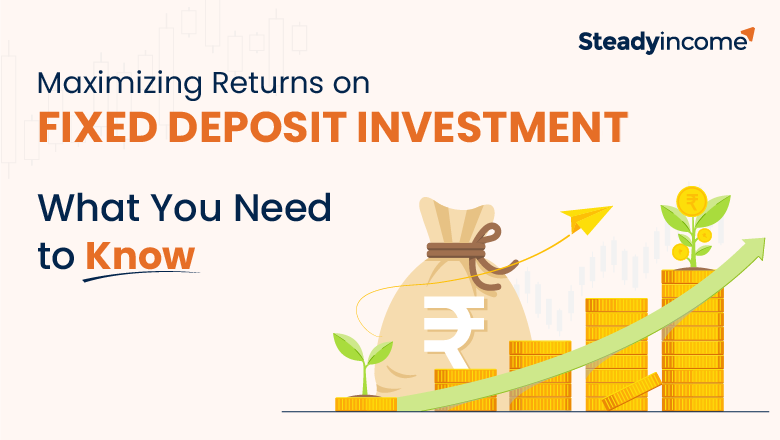Maximizing Returns on Fixed Deposit Investment: What You Need to Know

Fixed deposit investments (FDs) are one of the safest and most reliable investment options for those looking to earn stable, risk-free returns. They are particularly popular among conservative investors who prioritize security over high returns. However, while FDs are a simple financial product, there are strategies to maximize your returns and make the most out of this investment.
Fixed deposit investments offer a fixed interest rate over a predetermined period, and the principal is returned at the end of the term. Although the interest rates for FDs are lower than other investments like stocks or mutual funds, they remain an attractive option for many due to their guaranteed returns. Additionally, FDs provide flexibility in terms of tenure, allowing investors to choose periods ranging from a few months to several years, based on their financial goals.
Given that FD rates vary across banks and financial institutions, understanding the key factors that influence returns can help you make the most of this low-risk investment. Whether you are investing for the short term or looking for a long-term safe harbor for your funds, optimizing your strategy is crucial.
Here, we’ll explore practical steps to maximize returns on fixed deposit investments. From choosing the right tenure and comparing interest rates to utilizing tax-saving options and senior citizen schemes, these strategies can help you secure better returns while keeping your capital safe.
1. Choose the Right Tenure
Interest rates vary based on the tenure of the FD. Choose a period that aligns with your financial goals and offers the best rates. Longer tenures usually provide higher rates, but some mid-term tenures can also offer attractive returns.
2. Compare Interest Rates
Different banks and financial institutions offer varying interest rates on fixed deposit investment. Before investing, shop around and compare rates to find the best deals. Smaller or newer banks may offer slightly higher rates to attract deposits.
3. Consider Cumulative vs. Non-Cumulative FDs
In cumulative FDs, the interest is compounded and paid at maturity, which can significantly increase your returns. Non-cumulative FDs, on the other hand, pay interest periodically (monthly, quarterly, etc.). If you don’t need regular income, cumulative FDs can be a better option to maximize growth.
4. Tax-saving fixed deposit investment
If you're in a higher tax bracket, consider tax-saving fixed deposit investment under Section 80C of the Income Tax Act, which allows deductions up to ₹1.5 lakh. Although they come with a lock-in period of five years, the tax benefit can enhance your effective returns.
5. Ladder Your Investments
Instead of locking all your funds into one fixed deposit, use a strategy called FD laddering, where you split your investment across different tenures. This way, you can reinvest at potentially higher rates if interest rates rise while maintaining liquidity.
6. Opt for Senior Citizen FD Schemes
If you are a senior citizen, take advantage of senior citizen FD schemes, which typically offer an additional 0.25% to 0.50% higher interest rates. This higher rate and low risk make FDs an attractive option for retirees seeking regular income.
7. Stay Updated on Special Offers
Banks often develop special schemes during certain times of the year, offering higher interest rates for specific periods. Keep an eye on such offers to take advantage of temporarily higher rates.
8. Avoid Premature Withdrawals
Withdrawing your FD prematurely can lead to penalties and lower interest rates. If you anticipate needing the funds before maturity, consider splitting your investments across multiple FDs with different tenures to maintain flexibility without affecting returns.
Conclusion
Fixed deposit investments are a safe and reliable investment option, especially for those seeking steady returns. However, by being strategic—whether through tenure selection, interest rate comparison, tax-saving options, or investment laddering—you can significantly maximize your returns. Careful planning and understanding of different FD options will help you make the most of your investment while keeping risks at a minimum.


